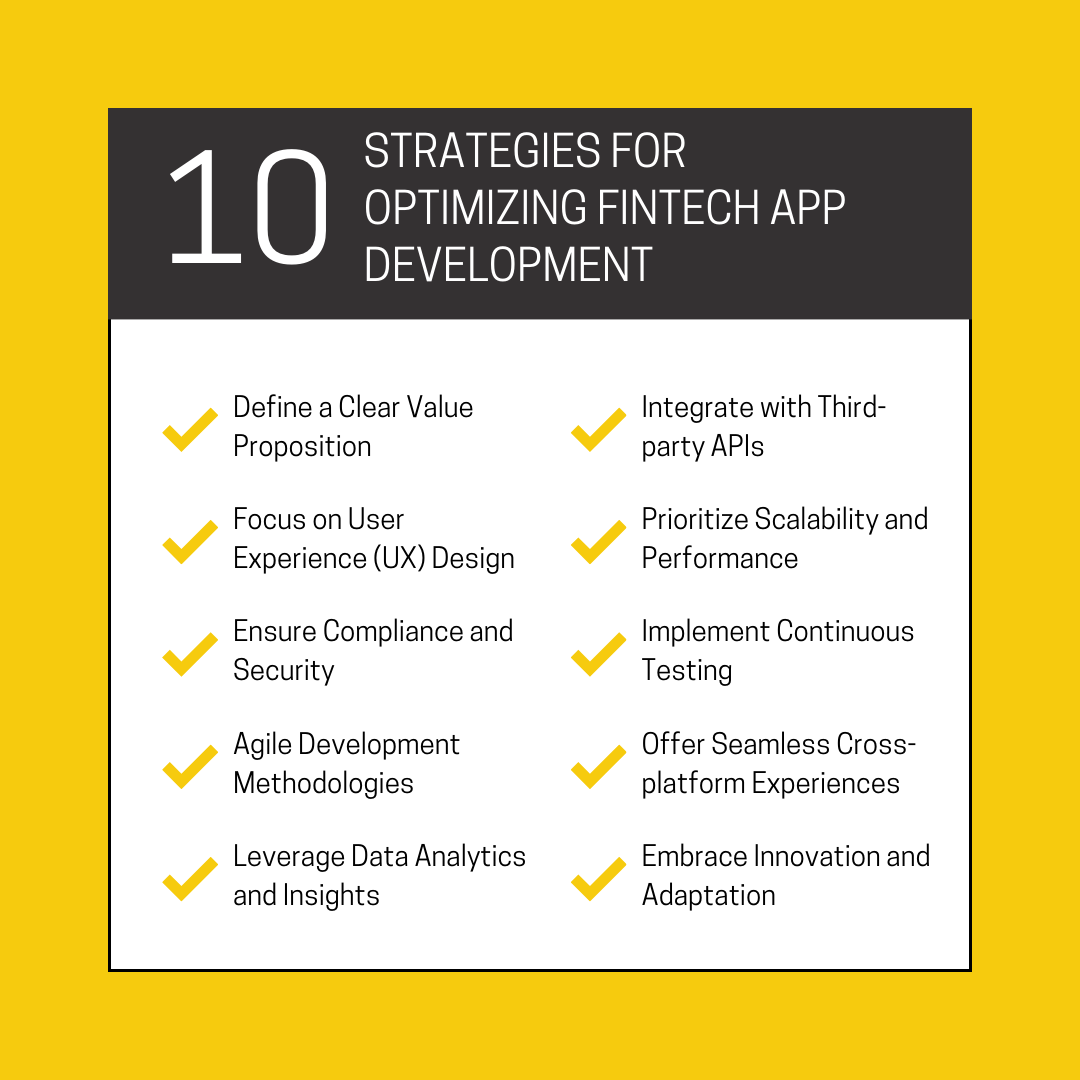In today’s rapidly evolving financial landscape, the role of technology has become increasingly paramount. Fintech application development has emerged as a powerful tool, revolutionizing the way we manage finances, conduct transactions, and interact with financial services.
However, in the competitive realm of fintech app development, success hinges not only on innovative ideas but also on strategic execution.
In this comprehensive guide, we explore key strategies to optimize fintech apps, empowering companies to deliver cutting-edge solutions that resonate with users and drive business growth.
Understanding the Fintech Landscape
Before delving into strategies for fintech app development, it’s crucial to grasp the dynamics of the fintech landscape. Fintech, short for financial technology, encompasses a wide array of digital solutions aimed at transforming traditional banking, investment, insurance, and payment services.
From mobile banking apps to peer-to-peer lending platforms and robo-advisors, fintech innovations are reshaping the way individuals and businesses manage their finances.
Key Strategies for Optimizing Fintech App Development:
1. Define a Clear Value Proposition: Start by identifying the unique value proposition of your fintech app. What problem does it solve for users? How does it differentiate from existing solutions in the market? Defining a clear value proposition is essential for attracting users and gaining a competitive edge.
2. Focus on User Experience (UX) Design: User experience is paramount in fintech app development. Invest in intuitive interface design, seamless navigation, and personalized user journeys. Prioritize simplicity and accessibility to ensure that users can easily navigate complex financial processes and features.
3. Ensure Compliance and Security: Compliance with regulatory requirements and robust security measures are non-negotiable in fintech app development. Prioritize data encryption, two-factor authentication, and adherence to industry standards such as PCI DSS and GDPR. Building trust with users is essential for the success of fintech applications.
4. Embrace Agile Development Methodologies: Adopting agile development methodologies such as Scrum or Kanban enables rapid iteration and adaptation to changing requirements. Break down development tasks into smaller increments, gather feedback from stakeholders regularly, and iterate based on user insights to ensure alignment with market needs.
5. Leverage Data Analytics and Insights: Data is the lifeblood of fintech applications. Implement robust analytics and reporting features to gather insights into user behavior, transaction patterns, and performance metrics. Use data-driven decision-making to optimize features, personalize offerings, and drive user engagement.
6. Integrate with Third-party APIs: Leverage the power of third-party APIs (Application Programming Interfaces) to enhance the functionality and interoperability of your fintech app. Integrate with payment gateways, banking APIs, identity verification services, and other relevant APIs to provide seamless user experiences and access to diverse financial services.
7. Prioritize Scalability and Performance: As your fintech app grows in popularity, scalability and performance become critical considerations. Design your app architecture with scalability in mind, leveraging cloud services and microservices architecture to accommodate increasing user loads and transaction volumes without compromising performance.
8. Implement Continuous Testing and Quality Assurance: Rigorous testing and quality assurance processes are essential to ensure the reliability, security, and functionality of fintech applications. Adopt automated testing frameworks, perform comprehensive security audits, and conduct user acceptance testing (UAT) to identify and address issues early in the development lifecycle.
9. Offer Seamless Cross-platform Experiences: In an increasingly mobile-centric world, offering seamless cross-platform experiences is essential for reaching a broader audience. Develop fintech apps that are compatible with various devices and operating systems, including smartphones, tablets, and web browsers, to maximize accessibility and user engagement.
10. Embrace Innovation and Adaptation: The fintech landscape is constantly evolving, driven by technological advancements, regulatory changes, and shifting consumer preferences. Embrace a culture of innovation and adaptation, continuously exploring emerging technologies such as blockchain, artificial intelligence, and machine learning to enhance your fintech offerings and stay ahead of the curve.
Conclusion:
In the fast-paced and competitive world of fintech, optimizing fintech app development strategies is essential for success. By defining a clear value proposition, prioritizing user experience, implementing continuous testing, and embracing innovation, fintech companies can unlock the full potential of their applications, deliver exceptional value to users, and thrive in the digital finance landscape.
If you are looking to develop a modern fintech app using cutting-edge technologies, then Andolasoft is the right software solution for you. We have expertise in creating optimized mobile apps to empower the finance industry to tap into a larger market segment.

